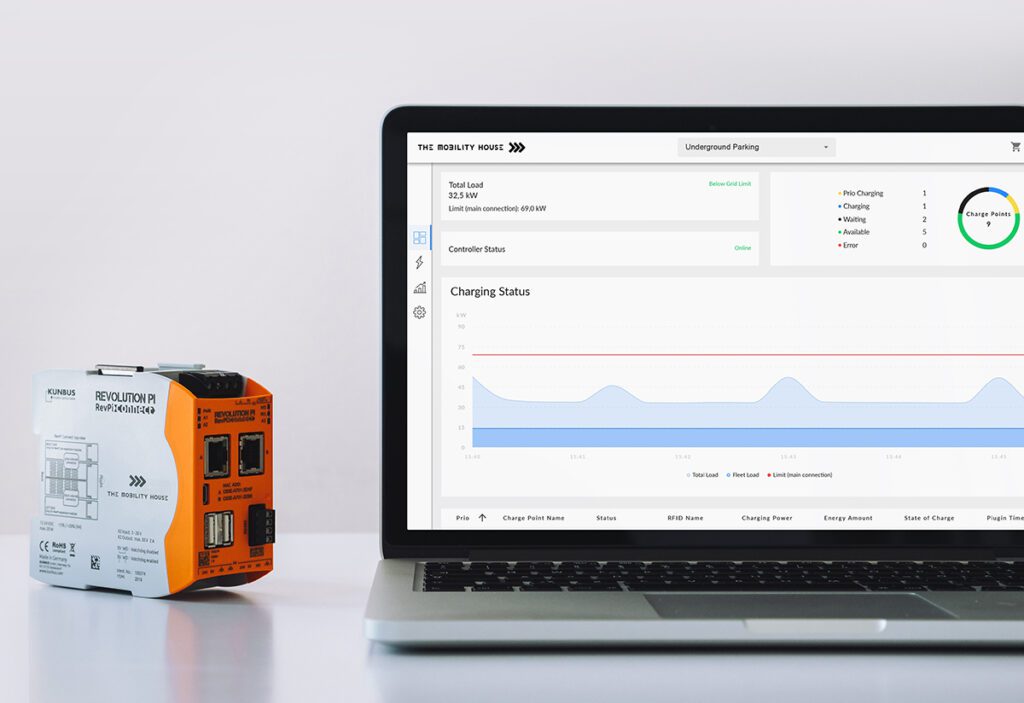Obviously, any fleet electrification project is going to include vehicles and charging hardware. However, don’t forget another critical part of the equation: a charge management system.
For many—or probably, most—fleet operators, power consumption is a major constraint. Charging stations that serve large fleets and/or heavy-duty vehicles suck up vast amounts of power. Using charge management to manage power levels and charging times enables a fleet or charging provider to limit its peak power usage and thus lower its electricity bills.
Planning infrastructure projects with charge management in mind can allow companies to meet their charging needs with fewer and/or lower-power chargers, and it can help to avoid long delays in getting new electrical service set up by the local utility.
Sam Hill-Cristol, Business Development Manager at The Mobility House, which provides charge management systems to a wide variety of customers, told Charged that charge management can be thought of as one of the Three Pillars of a fleet electrification project, alongside the vehicles and the charging hardware.
“I would say that charge management was not considered as one of the three pillars until recently. It was seen as within the chargers themselves, and now it’s starting to be seen separately.”
“I would say that charge management was not considered as one of the three pillars until recently,” he said. “It was seen as within the chargers themselves, and now it’s starting to be seen separately.”
Sophisticated charging stations generally provide some rudimentary charge management, and that may be an adequate solution “when you have only a couple of chargers.” However, more complex fleet situations call for a more comprehensive solution.
“It’s sort of a spectrum of charge management from what I would call load-sharing on a single circuit to a more advanced sort of site-level optimization,” says Hill-Cristol. The Mobility House’s charge management system, ChargePilot, “can look at schedules, costs, power limitations across a whole site, multiple sub-panels, multiple types of chargers; and even provide some ability to integrate with solar and storage or a micro-grid, or talk to a depot management system that’s calculating schedules.”
Simple versions of charge management are “cloud-based and/or within the chargers themselves,” Hill-Cristol explains. “They might do something simple like share power equally between a few chargers on a single circuit, depending on how many vehicles are plugged in. A more robust charge management system—something that is more of a fit for fleets or multi-family, and can really help us attack the distribution grid limitations—that system has a local controller [with] a switch, or multiple switches, so you can connect a bunch of chargers to it.”

Robustness and reliability are top priorities. ChargePilot’s controller is hard-wired with Ethernet cable into every charger—not daisy-chained—so that if communication with one charger is lost, the rest keep working normally. The Mobility House can push updates to the system from the cloud, but if connectivity is lost, the charging management system keeps doing its thing.
The physical components of a charge management system are pretty much off-the-shelf, Hill-Cristol explains. “The software is what’s proprietary and where all the intelligence lies. That’s what allows us to optimize charging based on whatever the available power is, whatever the limit is that the grid has, or a sub-panel has, the schedules of the vehicles and the cost of electricity.”
Source: The Mobility House
